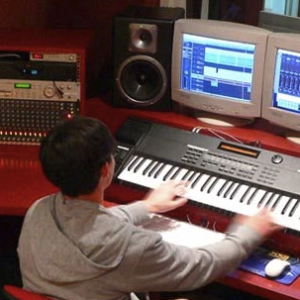Partitur.es: The path to music standard – GeneralMIDI and MusicXML
[aka TetuanValley Start-up School 2010 Spring Ed. post #2]
In the beginning, there was the dark… well, in the beginning there was the mess. In the 1970s, a growing electronical music devices industry provided successively more affordable products. This resulted on a series of different linking protocols. Each manufacturer (Roland, Yamaha, Oberheim) had its own standard and interfaces.
 In 1981, audio engineer and synthesizer designer of Sequential Circuits, Inc., Dave Smith, proposed a digital standard for musical instruments in a paper for the Audio Engineering Society. MIDI (Musical Instrument Digital Interface), was defined in 1982 as an industry-standard protocol, with the joined forces of MIDI Manufacturers Association (MMA) from USA and MIDI Committee of the Association of Musical Electronic Industry (AMEI) from Japan. The MIDI Specification 1.0 was then published in August 1984. The creation of MIDI broke the so-called «wall of sinthesizers». But the important year for standarized music notation is 1991, with the publication of General MIDI (GM).
In 1981, audio engineer and synthesizer designer of Sequential Circuits, Inc., Dave Smith, proposed a digital standard for musical instruments in a paper for the Audio Engineering Society. MIDI (Musical Instrument Digital Interface), was defined in 1982 as an industry-standard protocol, with the joined forces of MIDI Manufacturers Association (MMA) from USA and MIDI Committee of the Association of Musical Electronic Industry (AMEI) from Japan. The MIDI Specification 1.0 was then published in August 1984. The creation of MIDI broke the so-called «wall of sinthesizers». But the important year for standarized music notation is 1991, with the publication of General MIDI (GM).
MIDI has gone far beyond notated music (General MIDI, GM), allowing computers, synthesizers, MIDI controllers, etc. to control one another, to synchronize (MIDI timecode) and to exchange system data. It also allows to control stage effects on a concert, like lighting (MIDI Show Control). eXtensible Music File (XMF) describes a set of downlodable sounds in case you want to hear the same music as heard by the composer.
In 1994, another standard appeared: NIFF, Notation Interchange File Format. It was mainly used on Music OCR (Optical character recognition) software as the exportable result of scanning a chord on paper. NIFF was abandoned by their creators and sponsors in 2006.
In 2004 an open XML-based music notation file format that was the natural replace for GM was presented: MusicXML. It was developed by Recordare LLC, but with not-so-free license free of charge free license and just copyright trademark. MusicXML 2.0 was designed in 2007, including the definition for a compressed file (a nice improvement, because XML text documents are bigger than necessary). By 2010, more than 120 software programs use this format as well as their own one, becoming the de-facto standard one for shared music chords.
At Partitur.es we are going to deal mainly with GeneralMIDI and MusicXML, but we are open to cover other formats (Guido, NIFF or whatever our users say they need) on the import/export following the DataPortability ideals.